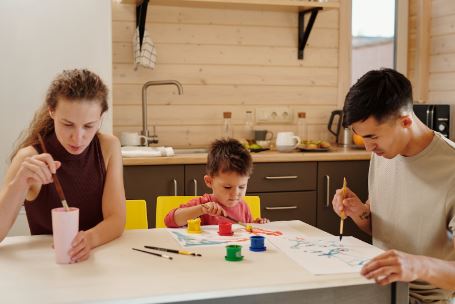Montessori education, renowned for its child-centered approach, extends beyond traditional subjects to embrace the world of art and creativity. In a Montessori classroom, art isn't just an extra-curricular activity; it's an integral part of the learning experience. This article delves into how Montessori methods encourage artistic expression and creativity in children and provides insights into art-related activities and materials that can be used to nurture these essential skills. At Montessori Australia, you can find resources that support this holistic approach to education.
1. The Montessori Approach to Art

The Montessori approach to art focuses on fostering creativity and self-expression in children. It recognizes that artistic endeavors are not just about producing beautiful works but also about the process of exploration and self-discovery. Montessori classrooms provide a nurturing environment where children can explore various art forms, including drawing, painting, sculpture, and more.
2. Art as a Form of Self-Expression

Montessori educators encourage children to use art as a means of self-expression. Through their artwork, children can communicate their feelings, thoughts, and experiences, even before they have the vocabulary to express them verbally. This process of self-expression is essential for emotional development.
3. Freedom Within Limits

The Montessori method emphasizes "freedom within limits," and this principle extends to art. Children are given the freedom to choose their art projects, materials, and techniques. However, there are limits in place, such as respecting the materials and the work of others. This balance of freedom and responsibility helps children develop self-discipline and respect for their creative process.
4. Focus on the Process, Not Just the Product

In Montessori art education, the emphasis is placed on the creative process rather than the end product. Children are encouraged to explore, experiment, and make their artistic choices. This approach promotes problem-solving skills, critical thinking, and an appreciation for the journey of creating.
5. Art as an Extension of Other Subjects

Montessori education integrates art into other subjects, creating a holistic learning experience. For example, art can be used to explore concepts in science, geography, or history. This interdisciplinary approach encourages children to see the connections between different areas of knowledge.
6. Art Materials in Montessori Education

Montessori classrooms are equipped with a variety of art materials carefully chosen to support creative exploration. Some common art materials include:
-
Watercolor Paints: These paints are favored for their transparency and ease of use. Children can experiment with mixing colors and creating different effects.
-
Colored Pencils and Pastels: These tools are excellent for drawing and adding color to artwork. They allow for fine detail work and shading.
-
Clay and Sculpture Materials: Montessori classrooms often provide clay and sculpting materials to encourage three-dimensional creativity.
-
Natural and Recycled Materials: Children are encouraged to use natural and recycled materials in their artwork, fostering an appreciation for the environment and resourcefulness.
7. Art-Related Activities in Montessori Education

Here are some art-related activities commonly found in Montessori classrooms:
-
Nature Art: Children are encouraged to create art using natural materials they find outdoors, such as leaves, twigs, and stones.
-
Observational Drawing: Children may engage in observational drawing, where they closely study an object or specimen and then draw it. This activity enhances their powers of observation and attention to detail.
-
Cultural Art Exploration: Montessori education often includes exploration of art from different cultures around the world, exposing children to diverse artistic traditions.
-
Art Journals: Children can keep art journals where they document their creative process, thoughts, and feelings about their artwork.
-
Group Art Projects: Collaborative art projects encourage teamwork, communication, and the sharing of ideas among children.
8. Encouraging a Love for Art at Home

Parents can also foster a love for art at home by providing a creative space with art materials readily available. Encourage your child's artistic exploration by praising their efforts rather than focusing solely on the final result. Display their artwork proudly, and participate in art activities together to create a sense of shared creativity.
Conclusion
In Montessori education, art is not an isolated subject but an integral part of a holistic approach to learning. Through creative expression, children develop essential skills such as problem-solving, self-expression, and critical thinking. Montessori classrooms provide a nurturing environment where children are free to explore their creativity while learning to respect the creative process and the work of others. By embracing the principles of Montessori art education, parents and educators can help children unlock their full creative potential, fostering a lifelong love for art and self-expression. Visit Montessori Australia to explore resources that support this enriching approach to education.

